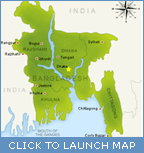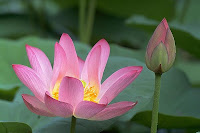Welcome to my Blog site
Monday, November 23, 2009

Locations and Area
Bangladesh is located in south Asia and can be located on a map using the geographically coordinates of 24 degree E. The country is very marshy as it is situated in a low-lying coastal area and sees a lot of annual rainfall. The country suffers from flood, cyclones, tornadoes and tidal bores on an annual basis. Te country also enjoys very fertile and an extensive network of rivers that is advantages to agriculture. There are a few distinct feature of Bangladeshi Geography that is worth noting.
Bangladesh covers an area of roughly 144000 square kilometers. This area can be divided into two distinct areas-a broad deltaic plain and a small hilly region deltaic plain is the larger of the tow and has wonderfully fertile soil. It is also subject to frequent flooding. The hilly area is found in the southeast of the country and is made up of the chittagong Hills. The country shares its borders with India and Burma (Myanmar) and has roughly 600 kilometers of beautiful coastline. Bangladesh is also dotted by rivers and streams-many of which culminate in the picturesque Bay of Bengal. Roughly 16 percent of Bangladesh is covered with forest and woodland and as a result the country is able to harvest large quantities for timbered, bamboo and sugarcane. The Sundarban on the southwest coast serve as nice tourist area in Bangladesh.

Weather and Monsoon
Bangladesh is a dominant feature of life is the annual cycle of overabundance of water in the monsoon and its scarcity in winter. But the phenomenon changes dramatically during the winter months of November to May when the flows in the three major rivers- Ganges, Brahmaputra and Meghna - decrease considerably and most of the streams and channels almost dry up leading to shortage of fresh water for use in agriculture, fishery, navigation and industries as well as for domestic use.
Citizens
The populations of Bangladesh are almost evenly distributed throughout its 64 districts except for the three Hill Tracts districts which are rather sparsely inhabited. Regionally, the eastern districts have a slightly higher density than the western ones. On average, a district has a population of about 1.8 million, a thana 230,000, a union 25,000 and a village 2,000. There are 490 thanas, 4,451 unions and 59,990 villages. The number of households is about 20 million. On average, a household consists of 5.6 persons. The tribal people, who lead a simple life, are generally self-reliant, producing their own food and drinks and weaving their own clothes.
The populations of Bangladesh are almost evenly distributed throughout its 64 districts except for the three Hill Tracts districts which are rather sparsely inhabited. Regionally, the eastern districts have a slightly higher density than the western ones. On average, a district has a population of about 1.8 million, a thana 230,000, a union 25,000 and a village 2,000. There are 490 thanas, 4,451 unions and 59,990 villages. The number of households is about 20 million. On average, a household consists of 5.6 persons. The tribal people, who lead a simple life, are generally self-reliant, producing their own food and drinks and weaving their own clothes.
Capital
The capital city of Dhaka has an estimated population of 8.58 million. The annual growth rate of the population has come down to 1.75% with the acceptance of family planning practices rising to 48.7%. The crude birth rate per 1000 is 25.6 and the death rate is 8.1. Life expectancy at birth is 59.5 years. The rate of child mortality per 1000 has come down to 76.8 and that of maternal mortality to 4.5. About 96.3% families in the country have now access to safe drinking water. The sex ratio is 106 males for every 100 females. The density of population per square kilometers is 800.
The capital city of Dhaka has an estimated population of 8.58 million. The annual growth rate of the population has come down to 1.75% with the acceptance of family planning practices rising to 48.7%. The crude birth rate per 1000 is 25.6 and the death rate is 8.1. Life expectancy at birth is 59.5 years. The rate of child mortality per 1000 has come down to 76.8 and that of maternal mortality to 4.5. About 96.3% families in the country have now access to safe drinking water. The sex ratio is 106 males for every 100 females. The density of population per square kilometers is 800.
Language
Bangla is our main language. Sometimes it’s called Bengali. Most of the people of our country speak in Banlga. More than 98 percent of the population it is the first language. It is written in its own script, derived from that of Sanskrit. Urdu is the language of several hundred thousand people, many of whom emigrated from India in the late 1940s.
The UNESCO has declared 21st February as The International Mother Language day to be observed in Paris in November 1999 globally in recognition of the sacrifices of the Bangla language martyrs who laid their lives for establishing the rightful place of Bangla.
UNESCO said-' 21st February be proclaimed International Mother Language Day throughout the world to commemorate the martyrs who sacrificed their lives on this very day in 1952’.
Bangla is our main language. Sometimes it’s called Bengali. Most of the people of our country speak in Banlga. More than 98 percent of the population it is the first language. It is written in its own script, derived from that of Sanskrit. Urdu is the language of several hundred thousand people, many of whom emigrated from India in the late 1940s.
The UNESCO has declared 21st February as The International Mother Language day to be observed in Paris in November 1999 globally in recognition of the sacrifices of the Bangla language martyrs who laid their lives for establishing the rightful place of Bangla.
UNESCO said-' 21st February be proclaimed International Mother Language Day throughout the world to commemorate the martyrs who sacrificed their lives on this very day in 1952’.
Educations
44.3% of the people are literate with about 5 million having passed secondary school level and another 1.27 million being graduates. The primary school enrollment rate has risen to 86% and the rate for secondary school enrollment to 33%. To intensify promotion of compulsory primary education, the food-for education program has been extended to over
Liberation War
The war of Liberation in 1971 many people laid their life for relieve country from enemy. About 3 million of people sacrifice their life for country. After 9 month they fought for enemy and finally we are independence from enemy. This day called Independence Day. Every year we celebrate this day with very religiously and memorably.
Foods
In our country most of the people are Bengali so as a Bengali our main food are rice, dal, fish, vegetables, fruits and others.
Some people eat wheat as moida and ata. But our main food is rice and fish. That’s why we called we are Bengali to eat rice and fish.
Agriculture-products: rice, jute, tea, wheat, sugarcane, potatoes, tobacco, pulses, oilseeds, spices, fruit; beef, milk, poultry.
In our country most of the people are Bengali so as a Bengali our main food are rice, dal, fish, vegetables, fruits and others.
Some people eat wheat as moida and ata. But our main food is rice and fish. That’s why we called we are Bengali to eat rice and fish.
Agriculture-products: rice, jute, tea, wheat, sugarcane, potatoes, tobacco, pulses, oilseeds, spices, fruit; beef, milk, poultry.
Religion
Islam, the state religion, is the faith of 88 percent of the population, almost all of whom adhere to the Sunni branch. Hindus make up most of the remainder, and the country has small communities of Buddhists, Christians, and animists.
Bangladesh is one of the largest Muslim countries in the world. Most Bangladeshi Muslims are Sunnis, but there is a small Shia community.
Islam, the state religion, is the faith of 88 percent of the population, almost all of whom adhere to the Sunni branch. Hindus make up most of the remainder, and the country has small communities of Buddhists, Christians, and animists.
Bangladesh is one of the largest Muslim countries in the world. Most Bangladeshi Muslims are Sunnis, but there is a small Shia community.
Economy
Bangladesh is an agricultural country. With some three-fifths of the population engaged in farming. Jute and tea are principal sources of foreign exchange. But in a day Garments sections clothes exporting is our one of the main income source in our country. Eighty percent of Government income source come out every year with this garments export clothes. Because labor cost of our country is very low than the other country so foreign country are easily feel interest about this projects.
GDP: purchasing power parity - $230 billion (2001 EST.)
GDP-per capita: purchasing power parity - $1,750 (2001 EST.)
Household income or consumption by percentage share:
lowest 10%: 3.9%.
highest 10%: 28.6% (1996).
Labor
note: extensive export of labor to Saudi Arabia, Kuwait, UAE, Oman, Qatar, and Malaysia; workers' remittances estimated at $1.71 billion in 1998-99.
Bangladesh is an agricultural country. With some three-fifths of the population engaged in farming. Jute and tea are principal sources of foreign exchange. But in a day Garments sections clothes exporting is our one of the main income source in our country. Eighty percent of Government income source come out every year with this garments export clothes. Because labor cost of our country is very low than the other country so foreign country are easily feel interest about this projects.
GDP: purchasing power parity - $230 billion (2001 EST.)
GDP-per capita: purchasing power parity - $1,750 (2001 EST.)
Household income or consumption by percentage share:
lowest 10%: 3.9%.
highest 10%: 28.6% (1996).
Labor
note: extensive export of labor to Saudi Arabia, Kuwait, UAE, Oman, Qatar, and Malaysia; workers' remittances estimated at $1.71 billion in 1998-99.
Festivals
Among religious festivals of Muslims Eidul Fitr, Eidul Azha, Eiday Miladunnabi, Muharram etc. are prominent. The contention that Bengali Muslims are all descended from lower-caste Hindus who were converted to Islam is incorrect; a substantial proportion are descendants of the Muslims who reached the subcontinent from elsewhere.
Hinduism is professed by about 12 percent of the population. Durga Puja, Saraswati Puja, Kali Puja etc. are Hindu festivals. Hindus in Bangladesh are almost evenly distributed in all regions, with concentrations in Khulna, Jessore, Dinajpur,Faridpur and Barisal
Among religious festivals of Muslims Eidul Fitr, Eidul Azha, Eiday Miladunnabi, Muharram etc. are prominent. The contention that Bengali Muslims are all descended from lower-caste Hindus who were converted to Islam is incorrect; a substantial proportion are descendants of the Muslims who reached the subcontinent from elsewhere.
Hinduism is professed by about 12 percent of the population. Durga Puja, Saraswati Puja, Kali Puja etc. are Hindu festivals. Hindus in Bangladesh are almost evenly distributed in all regions, with concentrations in Khulna, Jessore, Dinajpur,Faridpur and Barisal
Art & Culture
Other famous artists of
Saturday, November 21, 2009
Subscribe to:
Posts (Atom)

